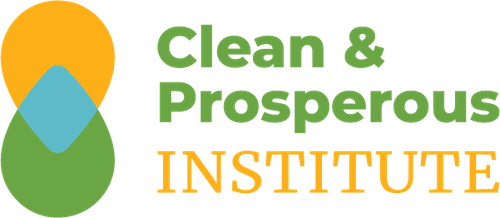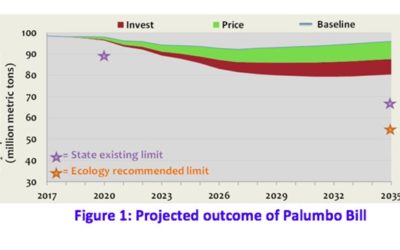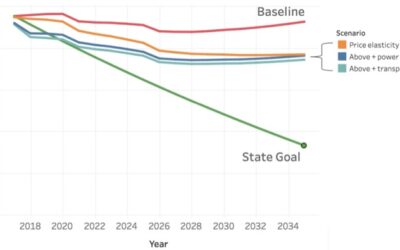Clean & Prosperous Institute
Greenhouse Gas Modeling
Modeling Tools
Under the guidance of Kevin Tempest, our Research and Data Scientist, Clean & Prosperous Institute equips policymakers, businesses, and organizations with valuable insights into the cost-effectiveness and public advantages of policies and technologies aimed at reducing carbon emissions. In addition to our published reports like “Washington’s Decisive Decade” and “Building Back Better,” the Institute has developed proprietary modeling tools to enhance decision-making processes.
Fiscal Scenario Modeling
In preparation for the 2023 Legislative session, we designed a tool to project cap-and-invest allowance revenue and construct a budget of expenditures aligning with the mandated spending overlay requirements.
GHG Explorer (No Longer Updated)
Our GHG Explorer serves as a tool to assess carbon pricing policy proposals for lowering greenhouse gas emissions. Reviewed for accuracy by the Washington Departments of Commerce and Ecology, this model was featured in numerous legislative hearings and utilized to shape policy development. Built upon the state’s Carbon Tax Assessment Model (CTAM), the Explorer incorporates customizable layers that swiftly and comprehensively evaluate policy design considerations, offering interconnected outputs that are responsive and accurate. For a practical example, refer to our analysis of SB 6203 from the 2018 Legislative Session.
Relevant Posts
Modeling Analysis of SB 5930 (Sen. Palumbo) Carbon Tax Proposal
Using a proprietary modeling system, the Washington Business Alliance analyzed the expected outcomes of Senator Palumbo’s Carbon Tax Bill, Senate Bill 5930. SB 5930 is projected to generate a peak of roughly $1.8 billion/year in 2024 (in USD, 2018), and reduce greenhouse gas emissions by a similar amount as the Clean Air Rule (CAR): around 180 million metric tons of carbon dioxide equivalents (MtCO2e) give or take around twenty percent.
Carbon Policy Explorer Enables Better Decision-Making
At the Business Alliance we began to wonder how effective these different policies are likely to be at actually reducing GHG emissions and at what price. So we developed analytical software tools to evaluate the many scenarios being proposed. In evaluating all these proposals, voters and lawmakers alike are facing a lack of basic information about the different proposals. It’s difficult to identify comparative fiscal impacts, likely changes in energy costs, and the projected effectiveness of each policy in lowering greenhouse gas (GHG) emissions. That is why the Washington Business Alliance developed the GHG Reduction Explorer, intending to project the outcomes of various policy proposals that aim to price and regulate greenhouse gas emissions.
The Business View on I-732
As voters consider I-732 this election, it’s important to have accurate information on this initiative, the first in our nation proposing a carbon tax. Much has been written about I-732, some of it inaccurate.
Understanding Carbon Reduction: Marginal Abatement Cost Curves
A Marginal Abatement Cost Curve (MAC curve or MACC) is a succinct and straightforward tool for presenting carbon emissions abatement options relative to a baseline (typically a business-as-usual pathway). A MAC curve permits an easy to read visualization of various mitigation options or measures organized by a single, understandable metric: economic cost of emissions abatement.


